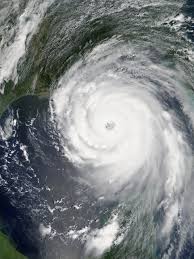Reflecting on Hurricane Katrina: Lessons and Legacy

Introduction
Hurricane Katrina, which struck in August 2005, remains one of the most devastating natural disasters in the history of the United States. Its impact on New Orleans and surrounding regions has reshaped the nation’s approach to disaster preparedness, response, and recovery. Understanding Katrina’s legacy is crucial for contemporary discussions on climate change and urban resilience.
The Devastation Unfolds
On August 29, 2005, Hurricane Katrina made landfall near New Orleans as a Category 3 hurricane, packing winds of up to 125 mph. The storm caused catastrophic failures in the levee system designed to protect the city, leading to widespread flooding. Approximately 80% of New Orleans was submerged under water, with many residents trapped in their homes and on rooftops.
Casualties and Displacement
The human toll was immense; estimates suggest that more than 1,800 people lost their lives, and thousands were displaced. The Federal Emergency Management Agency (FEMA) faced criticism for its slow response, which many believed exacerbated the crisis. Approximately 1 million people were forced to evacuate their homes, resulting in one of the largest mass displacements in US history.
Long-term Impact and Response
The aftermath of Hurricane Katrina brought significant changes in federal and state policies regarding disaster management. Reforms aimed at improving disaster response capabilities have been implemented, yet many feel that the underlying issues that contributed to the tragedy—a lack of investment in infrastructure and social services—remain unaddressed. New Orleans has made considerable progress in rebuilding efforts; however, many areas still struggle with the scars of the disaster.
Conclusion
As the nation reflects on the legacy of Hurricane Katrina nearly two decades later, there are essential lessons to be learned about climate change, socioeconomic disparities, and infrastructure resilience. The disaster highlighted the vulnerabilities of urban areas to extreme weather events and underscored the need for proactive measures to safeguard communities. It serves as a poignant reminder of the importance of preparedness, effective response, and long-term recovery planning in the face of natural disasters.









